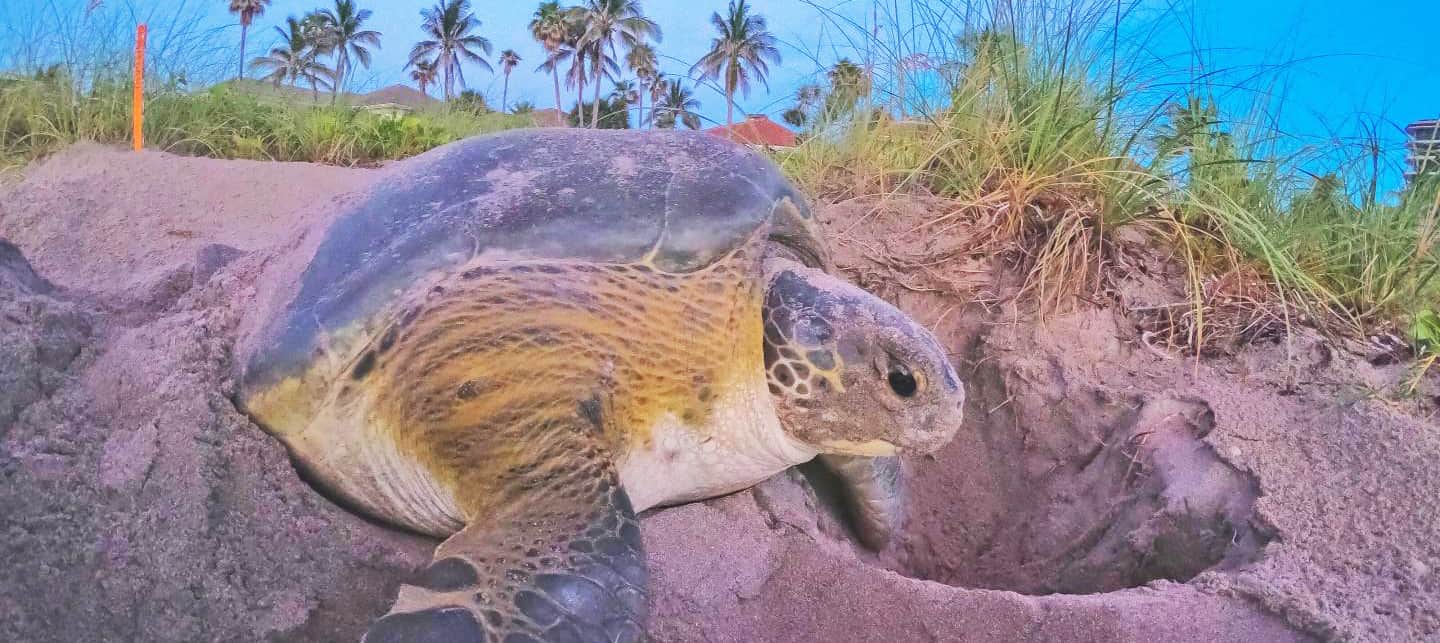Share this article
A check-up finds healthy sea turtles on Florida beach
For veterinary researcher Annie Page-Karjian, veterinary science and wildlife biology need to come together more often. Juno Beach, a six-mile stretch of coastline in Central Florida that is critical to nesting sea turtles, was just the place to make that happen.
“We all have a common goal,” said Page-Karjian, an assistant research professor and clinical veterinarian at Florida Atlantic University’s Harbor Branch Oceanographic Institute. “We want to see these endangered species populations increase over time. In order to successfully conserve a species or population, the animals that comprise that population have to be healthy. They have to be reproductively fit. You can’t conserve a species if the species you’re trying to conserve is composed of sick individuals.”
That made her wonder about the turtles on Juno Beach. The beach has had a successful sea turtle monitoring program for over 20 years, helping the turtle population recover. It has some of the largest densities of sea turtle nesting populations in the country. It’s an important site for loggerheads (Caretta caretta) and leatherbacks (Dermochelys coriacea) and hosts one of Florida’s largest nesting green sea turtle (Chelonia mydas) populations.
“Sea turtles choose beaches for their topography,” Page-Karjian said. “Different species have different types of beach that they nest on, but they’re looking for a broad stretch of beach that’s not too steep, where the high tide line doesn’t cover the nest. In general, sea turtles return to the region where they’re born, so it’s like a legacy. Sea turtles that were born on Juno Beach 25 years ago will very likely return to the same region to nest.”
But, she wondered of about the health of the individuals in those populations — not just the population as a whole.
“One of the things I try to exemplify with my work is synergy with biologists, trying to show that veterinarians working together with biologists can produce more comprehensive information about the animals.”
Nest counts have taken place since 1989, but no one had conducted an in-depth health assessment of the turtles. Page-Karjian’s team, comprised of researchers from Harbor Branch and Loggerhead Marinelife Center, gave the green sea turtles on Juno Beach a check-up in what they say is the world’s most comprehensive health assessment of nesting green sea turtles to date. They published their results in Endangered Species Research.
It was a record year for the turtles. Biologists counted 4,343 green sea turtles on Juno Beach in 2017, its busiest nesting year ever recorded. Researchers visited the nests, collecting blood sample from 60 female turtles to check for a range of health data, including measures of reproductive success, stress hormones, blood chemistry, immunity and two herpesviruses that can cause respiratory and skin disease.
The results offered good news for the turtles, which have responded well to conservation measures aimed at restoring their populations. All were in good body condition. None tested positive for one of the viruses, and just five tested positive for the other. The virus-positive turtles appeared healthy. Other turtles had been exposed to the virus, possibly as juveniles, but they showed no ill effects, suggesting that while the virus is endemic in the population, the adult turtles remain healthy.
A related study on the hatchlings yet to be published offers similar good news, she said. Biologists and veterinarians should work together on analogous projects, she said, including health analytes any time they conduct population assessments.
Since researchers consider sea turtles sentinel species that can indicate the health of their ecosystem, Page-Karjian said, their findings bode well for the environment and can serve as baseline data for future studies.
“We’re seeing the result of 30 years of sea turtle conservation in Florida,” she said. “This should be a good example that protecting the beaches does work.”
Header Image: : A female sea turtle nests on Juno Beach, Florida. Credit: Jennifer Reilly








